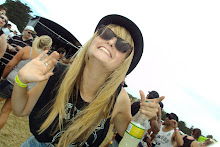The Shadow Studio project that I propose is primarily about the relationship between sensation and imprint through sleeping patterns and the exploration into if they can be induced or replicated.
The key words involved in my proposed research into the Shadow Studio are Sensation, Imprint, Psychology and Behaviour.
These words stem from my explorations into different materials and sleeping patterns.
The idea of sleep and its behavioural patterns concerned me with its links to subconscious feeling.
Subconscious feeling was initially discussed as a question of dress, “Do you have to be clothed to feel dressed?”, and with regards to sleep the example of the sensation of falling whilst in a dream state.
I plan to research sleep behavioural patterns by looking closer into sleep psychology and possibly even my own sleeping patterns on a scientific level. This will include studying text on the subject as well as approaching professional institutions like sleep apnoea clinics.
There have also been some sleep myths that have arisen during my research so far and I plan to do a MythBusters inspired experiment with regards to my own thoughts and feelings.
This theme of sleep was also encountered during the discovery of imprints from clothing I slept in leaving marks and indentation that also created small intricate shadows.
The documentation of such Sleep Tattoos will be the bulk of my initial exploration into mark making on the skin in a subconscious state.
To further this exploration I plan to discover how different materials affect the skin, the permanency of such markings and possibly the affects on different skin types.
These experiments will be achieved by designating a different material to sleep in for each night of a week, which may also include unconventional types of clothing to sleep in such as occasional wear, ie. Formal wear and Swim wear.
Bed design is another experiment that may also heighten the outcomes by covering a larger surface area with selected materials and then documenting the varied effects on the skin as opposed to just clothing.
There are also research questions I plan to answer through these experiments, which include;
“Can subconscious feelings or sensations be replicated or reproduced?”
“Can skin imprints, or Skin Tattoos, give the illusion of clothing?”
“Can brain functions, or behaviours, be induced rather than a random occurrence?”
The possible outcomes from these experiments and research could range from an imprinting device designed especially to replicate clothing on the skin to a garment that physically maps the Sleep Tattoos that I have documented. These outcomes will depend on the success of my experiments and the logicality of whether to take the discoveries more literal or leave them in an exploratory realm.
Fashion and art are never mutually exclusive and so the discovery of artists doing similar sleep themed works may help me to understand others thoughts on the subject and also their creative output.
Imogen Cunningham is a photographer that documented The Unmade Bed in 1957. Her view is an angle I have already explored in photographing my bed linens after discovering Sleep Tattoos on my body and where they may have come from. Looking into this series and the meaning behind it may also open up some insights into how others perceive the ritual of sleep and express it creatively.
Timeline – Research Plan
Week 8:
Wear different materials and clothes to bed and document the outcomes
Look into texts on sleep psychology and note important findings and quotes.
Week 9:
Start the Bed Design phase of experimentation and document findings and compare to previous clothing experiments.
Contact sleep apnoea clinic and other specialists to discover common sleeping disorders and patterns and how they can affect behaviours.
Week 10:
Host a sleepover with friends, which includes the wearing of certain materials to discover the effects on a variety of skin types.
Document through photography, film and a possible survey relating to the quality of sleep.
Week 11:
Compile all experiment outcomes and compare similarities or differences to determine if a final outcome will be literal or otherwise.
(Example; if imprints are common in certain areas of the body a garment may be designed to enhance those intricate lines...)
Week 12:
Develop a design language based on all previous research.
This includes key shapes, detailing and materials.
Put this into a prototype form and document how the body reacts to the outcome.
Week 13:
Refine outcome…
More prototypes leading to a final.
Week 14:
Further refine or complete outcome.
Document all processes.
Week 15:
Use final outcome to determine other purposes or functions and the relation to the original concepts.
(Discover the success of my experiment and research)
Compile and finish folio.
Complie a professional printed outcome to be used during assessment.
Week 16:
Continue with assessment materials and outcomes.
Week 17:
Assessment!












